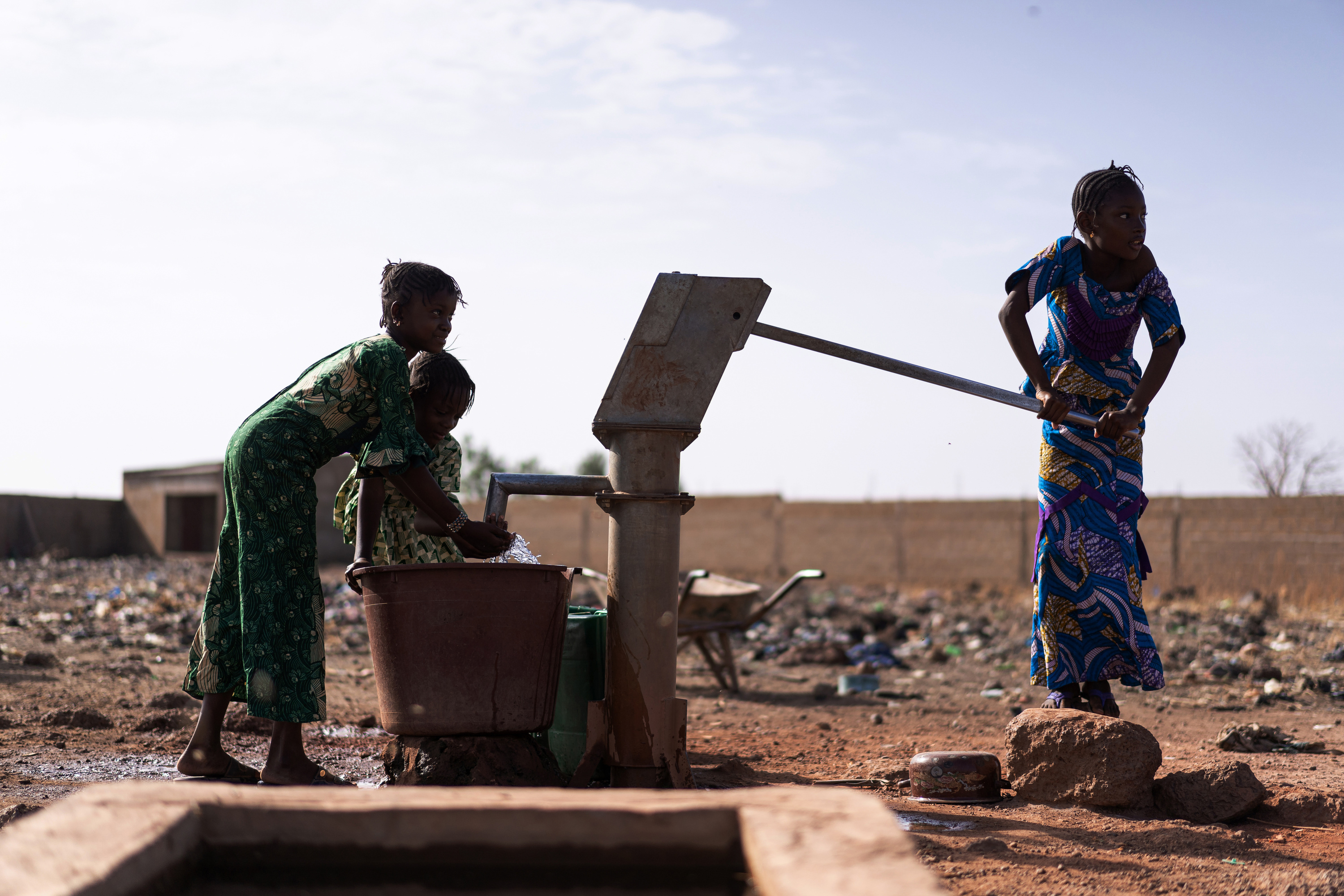PART A_1
We will read aloud the words below. Please repeat after me. I will check your pronunciation.
(Please send the mispronounced words and expressions to your student.)
PART A_2

| basic | 基本的な |
| society | 社会 |
| quality | 質 |
| suffer | (痛みなどに)苦しむ |
| disease | 病 |
PART A_3
Now, let’s review some words from Part A_2.
(Please review the mispronounced words and expressions from Part A_2.)
PART A_4
PART A_5
Please look at the picture in part A_2. Give a maximum of three things that you see in the picture.
(If your student is having a hard time to answer, please move to the next activity.)
PART A_6
PART B_1
You will read aloud the passage below. I will check your pronunciation and intonation.
(Please send the mispronounced words and expressions to your student.)
PART B_2
Food, water, air, and a place to live are the basic needs of life. But as societies become more advanced, some humans are left behind. Many people around the world still do not have access to clean water. As a result, adults and children get sick from poor water quality. People who live in small spaces with many people or who do not live in a clean place suffer from diseases caused by unclean and unsafe environments.
The World Bank’s Water and Sanitation Program helps improve water supplies in developing countries. Humans need clean water and clean living spaces to survive. Communities and governments must work together to help those in need.
PART B_3
Now, let’s review some words and sentences from Part B_2.
(Please review the mispronounced words and sentences from Part B_2.)
PART B_4
PART B_5
I will ask the following questions. Please answer based on the passage. I will check if your sentences are complete and if the grammar is correct.
PART B_6
| 1. | What are the basic needs of life? |
| Answer: | |
| 2. | What happens to people who live in small spaces with many people or who do not live in a clean place? |
| Answer: | |
| 3. | What does the World Bank’s Water and Sanitation Program help improve? |
| Answer: |
PART B_7
Now, let’s review your answers.
(Please review your student’s answers by sending the correct answers in complete sentences. After that, ask your student to read aloud his or her corrected answers.)
PART B_8
PART C_1
Please choose a word to complete each sentence. Then, read aloud the sentences.
PART C_2
society
quality
suffer
disease
| 1. | Clean water, safe living conditions, and good food improve people’s ________ of life. |
| 2. | Eating tomatoes can help prevent heart _______. |
| 3. | A labor shortage is a serious problem in an aging ________. |
| 4. | Many people still ______ from poverty. |
PART C_3
Now, let’s review your sentences.
(Please review your student’s answers by sending the correct answers in complete sentences. After that, ask your student to read aloud his or her corrected answers.)
PART C_4
PART D_1
Please answer the following question.
I will check if your sentences are complete and if the grammar is correct.
I will check if your sentences are complete and if the grammar is correct.
PART D_2
| Question: | Why is clean water important for survival? |
| Answer: |
PART D_3
Now, let’s review your answer.
(Please review your student’s answers by sending the correct answers in complete sentences. After that, ask your student to read aloud his or her corrected answers.)
PART D_4
PART E_1
Now, let’s answer the following questions. Your answer should start with “Yes/No.”
Give at least one reason to support your opinion. I will check if your sentences are complete and if the grammar is correct.
Give at least one reason to support your opinion. I will check if your sentences are complete and if the grammar is correct.
PART E_2
| 1. | Do you think people are using too much water, despite the fact that clean water is limited? |
| Answer: | |
| 2. | How can access to clean water help prevent diseases? |
| Answer: |
PART E_3
Now, let’s review your answers.
(Please review your student’s answers by sending the correct answers in complete sentences. After that, ask your student to read aloud his or her corrected answers.)
PART E_4
PART F_1
Let’s have a free talk about the following topic.
(Please have a free talk if there is time left.)
PART F_2
Where do you usually get drinking water? Do you think clean water is easy to access in your community?
PART F_3